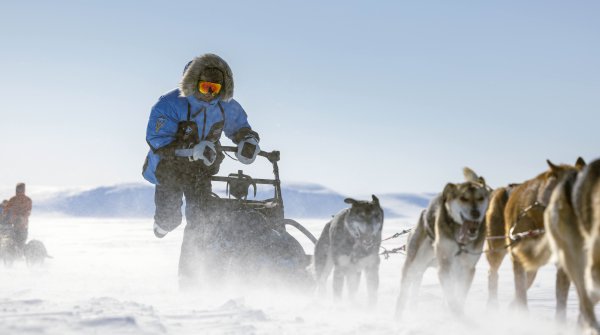
More and more athletes want to continue training outdoors in winter. But if you want to be active outside in the cold, you are faced with the challenge of needing a warm, breathable and lightweight protective layer at the same time. The U.S. company Outdoor Research has resolved this apparent contradiction and created the Deviator Hoodie, a product that defies the elements and helps regulate temperature during high activity.
For the Deviator Hoodie, Outdoor Research uses innovative technology and material mapping to create a lightweight and breathable cool-weather insulator for high-performance activities. Designed for a variety of active activities in cool weather conditions, it can retain heat when it's needed yet breathe and shed heat when moving.
To achieve this, the company uses a new insulation technology called VerticalX™ Octa, which is paired with a light woven softshell over top of it. This combination is placed in strategic locations, and hybrid mapped with a high-performing grid fleece in other areas, providing more effective performance for active use. VerticalX™ Octa does not require an inner lining and has an open structure, which allows it to breathe more effectively. In addition, the material is 50 percent lighter than conventional polyester insulation, has an excellent warmth-to-weight ratio, wicks moisture excellently and is soft on the skin.

Paired with a weatherproof and stretchy upper, VerticalX™ Octa has been strategically positioned to withstand the elements - on the front, shoulders, hood and outer arms. The back, sides and forearms are finished with grid fleece that is warm yet dissipates excess heat. In this way, athletes remain in the "sweet spot" of thermoregulation even in winter during aerobic training.
The woven shell material is made of 90 percent nylon and 10 percent spandex, while the grid fleece, which has an ActiveTemp thermoregulated treatement, is made of 95 percent polyester and five percent spandex. The VerticalX™ Octa Insulation is made of polyester. All materials are Bluesign certified.
The hoodie is available for men and women in different colors. To match the hooded jacket, there are similarly equipped wind pants and gloves that share the Deviator name. The hoodie has been available on the market since October 2023.
- Innovative Body Mapping Solution
- Particularly light and breathable
- Heat-regulating
- Weather protection in exposed areas

 PromotionMulti-functional torch
PromotionMulti-functional torch
- Awards
- Mountain sports
- Bike
- Fitness
- Health
- ISPO Munich
- Running
- Brands
- Sustainability
- Olympia
- OutDoor
- Promotion
- Sports Business
- Textrends
- Triathlon
- Water sports
- Winter sports
- eSports
- SportsTech
- OutDoor by ISPO
- Heroes
- Transformation
- Sport Fashion
- Urban Culture
- Challenges of a CEO
- Trade fairs
- Sports
- Find the Balance
- Product reviews
- Newsletter Exclusive Area
- Magazine


